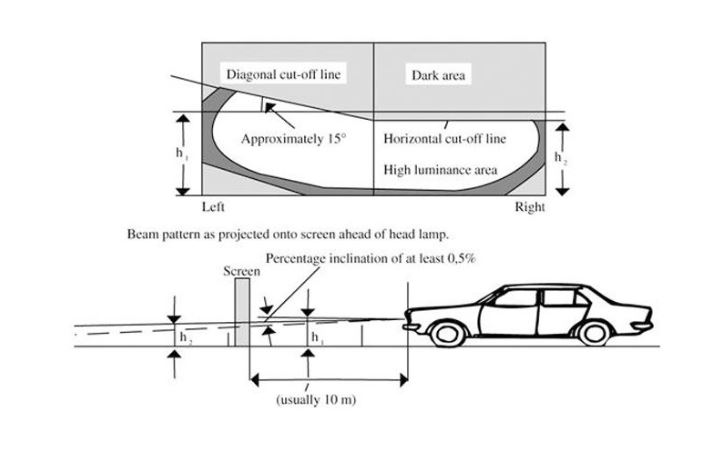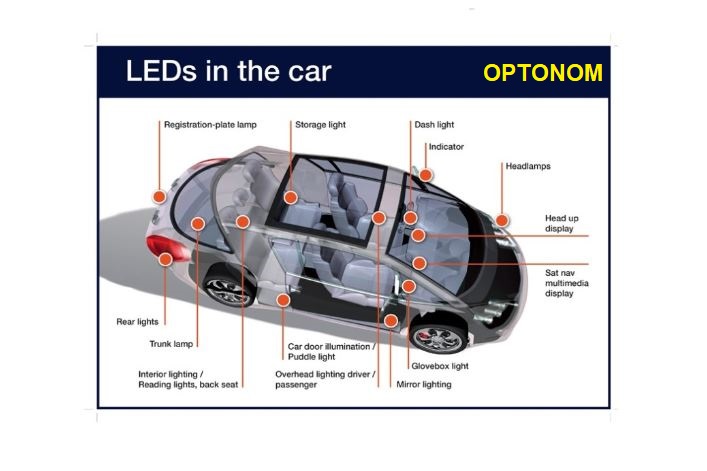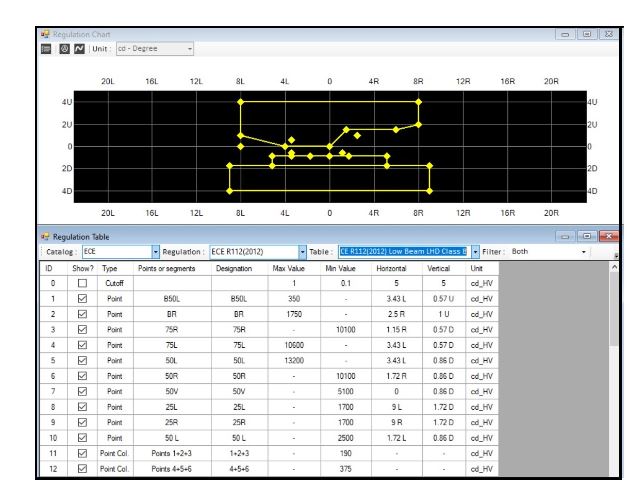Automotive LED Lighting System Regulations Pass/Fail Test by TracePro

Regulations Pass/Fail Test by TracePro
TracePro's The Lighting Toolkit provides visualisation tools and regulation tables to certify that simulated results meet the requirements of the lighting and automotive standards, and provides pass/fail criteria for ECE, SAE, IESNA, and FMVSS regulations.
Regulation Check By TracePro
LED compact light diodes open up a world of new possibilities. In the early days of the automobile, the aesthetics of illumination still played a subordinate role. Lights have dominated a car's since they were lanterns placed on the outside of the vehicle. As early as 1925, during the era of light bulbs, Osram made a significant contribution to automotive lighting: Bilux double-filament lamps, which were the first lamps to use only one lighting source for both dimmed light and head beams, thus improving lighting conditions. Since the 1970s, halogen car lamps have become established as the standard, and to this very day they are built into approximately 90 percent of all vehicles. However, with this source of lighting being used, it is very difficult to realize a unique design. Headlamps with glow-discharge lamps - so-called Xenon lamps - entered the market in the 1990s. The color temperature is similar to that of daylight. This is what makes the Xenon light appear whiter and thus enables better sight, especially in bad weather. What is more, the „high-tech" look of the lights adds to the design of the vehicle. Therefore, Xenon lights are offered as optional original equipment in more and more cars, contributing significantly to their look. LED: characteristic at first sight Nevertheless, three little letters will change the future face of automobiles: LED. They combine the practical aspects of the car's design with aesthetic factors in all respects.

Regulation 159: Headlamps
(1) No person shall operate on a public road-
a motor vehicle, other than a motorcycle, a motor tricycle with one wheel in front or trailer, unless it is equipped in front on each side of its longitudinal centre line with-one headlamp capable of emitting a main beam and a dipped beam; one headlamp capable of emitting a main beam and one headlamp capable of emitting a dipped beam; or one headlamp contemplated in subparagraph (i) or headlamps contemplated in subparagraph (ii) and an additional headlamp capable of emitting a main beam;
a motorcycle without a sidecar, motor tricycle with one wheel in front, unless it is equipped in front with-one headlamp capable of emitting a main beam and a dipped beam; one headlamp capable of emitting a main beam and one headlamp capable of emitting a dipped beam, both of which are fitted in the same vertical plane; or two headlamps, each capable of emitting a main beam and a dipped beam, both of which are fitted in the same horizontal plane; or
a motorcycle with a sidecar, unless-the motorcycle is equipped in front with one headlamp contemplated in paragraph
(b)(i) or headlamps contemplated in paragraph (b)(ii) or (iii); and the sidecar is equipped with one parking lamp which complies with the provisions of regulation 164 or with one headlamp contemplated in paragraph (b)(i), subject to the proviso to regulation 161(4)(a).

Dipped-beam
(1) Every headlamp emitting a dipped-beam of light which, when projected onto a vertical screen, shows a beam pattern with a sharp, clearly defined cut-off line diagonal to the left (hereinafter referred to as the “diagonal cut-off line”) and horizontal to the right (hereinafter referred to as the “horizontal cut-off line”), shall be so adjusted and maintained that, when the motor vehicle concerned is on a reasonably level road such beam at the horizontal cut-off line shall
(c) slant downwards at a percentage inclination of at least 0,5 per cent which percentage inclination shall be calculated in accordance with the formula
{{(h_1~-~h_2)} over L}~x~100; and
(b) strike the road surface ahead of the motor vehicle within a distance in metres calculated in accordance with the formula
200 x h1
(2) In the formulae referred to in sub-regulation (1)
(a) “h1” represents the height in metres of the headlamp measured to the centre of the headlamp vertically from ground level;
(b) “h2” represents the height in metres of the horizontal cut-off line measured vertically from ground level at the screen contemplated in sub-regulation (1)
For technical support please contact with us.
www.optonom.com.tr
For detailed document click here

.png)
